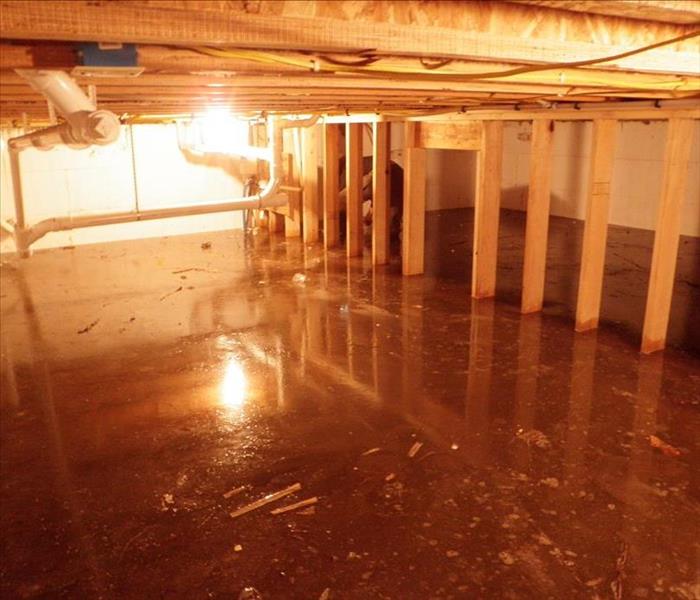SERVPRO Understands that Crawl Space Water is a Headache
3/14/2016 (Permalink)
SERVPRO of Metrocrest understands there's a lot of crawl space water issues out there. We thought this information from http://homerenovations.about.com/od/houseexteriorframework/a/WaterCrawlSpace.htm would be very helpful. Don't hesitate to call us at SERVPRO of Metrocrest, if you're in the Dallas area and need advice. We're here to help.
With excessive water in the crawl space, you have the related problem of mold. Mold loves to grow in places that have: a.) Moisture; b.) Lack of light. Both conditions perfectly describe a crawlspace. Mold will grow on the piers, joists, ducts, and other hard surfaces. But that's not all of the problem. Mold also grows on the "soft" materials, such as fiberglass insulation and on the plastic vapor barrier. When fiberglass insulation develops mold, it's impossible to clean off. Rip it out and replace it.
How landscape companies fix your problem.
The process described here basically sets up a perimeter within the crawlspace and seeks to capture the water trying to infiltrate the perimeter. When water hits this border, it is diverted into gravel-filled channels and fed by gravity to a sump pump. The sump pump then siphons up the water and purges it from the crawlspace.
What happens when they come into your house:
- Protect: Unless you can access your crawl space from the exterior, you will need to bring in materials through the house and down an access door. You will need to protect all walk areas with plastic. Or, to prevent slipping, you can use builder's or rosin paper.
- Remove Vapor Barrier: Your crawl space may already have a plastic vapor barrier. Remove this and discard.
- Dig Trench: Dig trench around entire interior foundation, using foundation as a guide. Trench should be between 8" and 24" from the foundation. If not, it may undermine the foundation.
- Lay Pipe: Lay down 3" socked flex perforated pipe through entire perimeter trench.
- Cover with Gravel: Cover with 1 1/2" drain rock.
- Spread Soil: What to do with all of that dug-up soil? Spread it evenly around crawl space.
- Install GFCI: Install a GFCI outlet in crawlspace.
- Install Sump Pump: At the low end of the perimeter trench, install a sump pump as recommended by manufacturer's directions.
- Discharge to Exterior: Sump pump to discharge perimeter trench water to outside.
- Install Vapor Barrier: Install 6 mil vapor barrier to prevent vapor transfer to crawlspace.
It's dumb, simple work. Still, you might be happier hiring a company.
It's hard work, especially if your crawl space is very low. Mine was between 4'6" and 5', which is pretty good. Even then, you have hundreds of pounds of drain rock and hundreds of feet of perforated pipe to move through the house. If you're not adept at electrical work, installing the GFCI for the sump pump can present a learning curve, too. Not an impossible DIY task, but you'll want to think long and hard before you take it on yourself.
Cost
Cost differs according to where you live and the size of your house (and the size of your problem; bigger or even multiple sump pumps may be needed). My house required 170' of perforated pipe and a single Zoeller 1/3 HP sump pump. I'd say it was a fairly average installation. Cost to hire a company, all materials and labor included (Fall 2009): $3,600. More recently, dealing with the purchase of a house that had standing water in the crawlspace, a few sources quoted a price of about $5,000.
How urgent?
Water mitigation and mold remediation companies will not agree, but you do have some leeway. Water can sit in the crawl space for a long time without having any adverse effect on your house. In the short term, you're dealing with mold on hard surfaces and perhaps some insulation needs to be removed and replaced. Over the long term, you're in for trouble: standing water can damage the house's foundation; wooden beams and joists begin to rot; and harmful strains of mold can develop. At the very least, you will be required to dry up the crawl space when it comes time to sell your house.






 24/7 Emergency Service
24/7 Emergency Service
